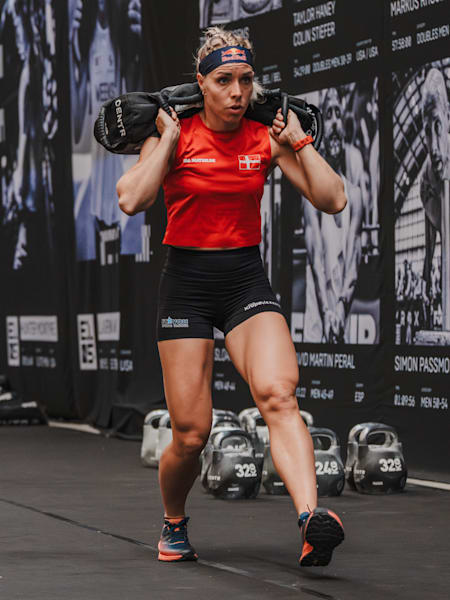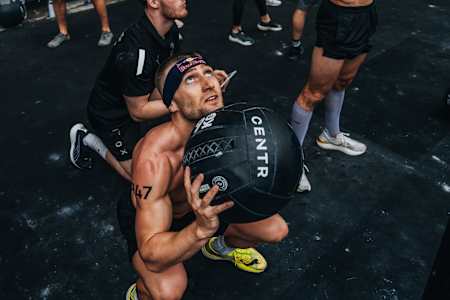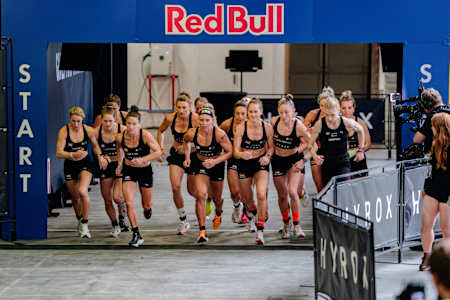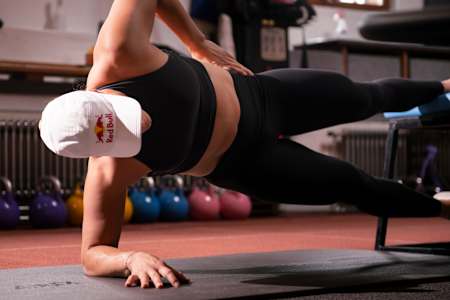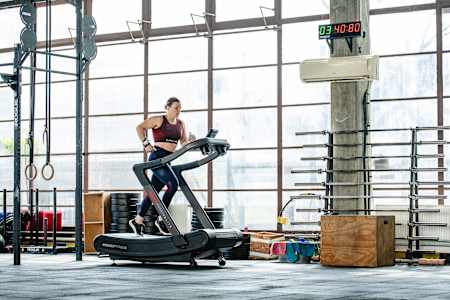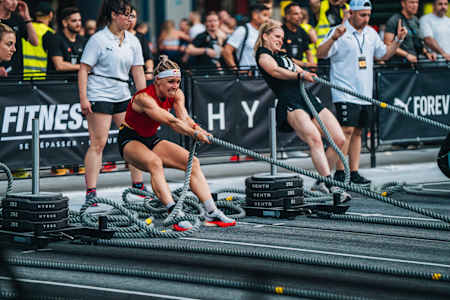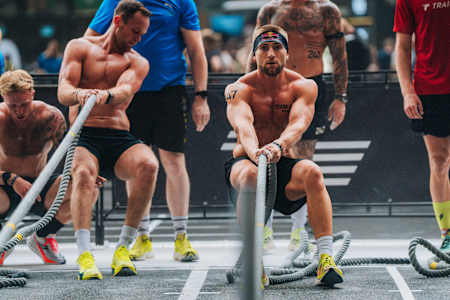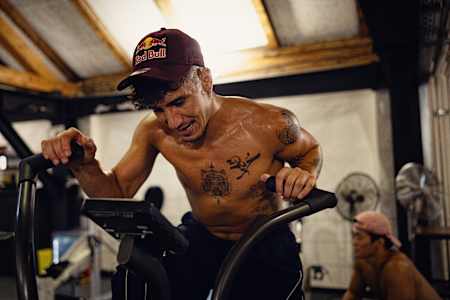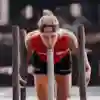When it comes to getting fit, one question keeps popping up: does HYROX training give you an athletic edge over traditional gym workouts? The answer isn’t as simple as it seems, because athleticism is like a toolbox - it comes with different tools for different tasks! Dive into this article to discover why there's no one-size-fits-all answer and uncover the unique perks of both HYROX and classic gym training.
HYROX, dubbed the "World Series of Fitness Racing" offers a competitive platform that combines running and functional workouts in a race format, designed to test endurance, strength and stamina. On the other hand, conventional gym training, a tried-and-true method, provides a customisable environment where individuals can tailor their routines to meet personal fitness goals, whether it's building muscle, losing weight, or improving overall health.
01
HYROX vs gym training: choosing the right fitness plan
Gym training encompasses a wide range of exercises and workouts designed to improve physical fitness, strength and overall health. It typically involves using various bits of equipment and facilities available at a gym, such as free weights, machines and cardiovascular kit. Gym routines can be highly customised, allowing individuals to focus on specific fitness aspects, such as increasing muscle mass, enhancing cardiovascular health, or improving flexibility.
Choosing the right fitness plan is key to reaching peak performance, building long-term athletic skills, and staying healthy overall. But what are we talking about when we look at HYROX and gym training?
02
What is HYROX?
HYROX is a competitive fitness race that combines functional exercises with running. It is designed to test participants' strength, endurance and overall fitness in a standardised format, making it possible to compare performances across different events and locations. The low entry barriers allow many gym enthusiasts to take part in HYROX, but make no mistake – the fitness race does require good overall fitness and preparedness on race day. The idea of HYROX when it was first created, in Germany in 2017, was to create a standardised fitness competition accessible to athletes of all levels.
"The level of entry is really low", explains Jake Dearden, a HYROX Doubles world champion. "It's because the movements don't require a massive amount of skill compared to other sports. Anyone can enter; whether it's the average gym-goer or a HYROX athlete."
03
What are the HYROX workouts?
The competition consists of a sequence of eight functional fitness workouts, each proceeded by a 1km run. The workouts are:
- 1km run
- 1km SkiErg
- 1km run
- 50m sled push
- 1km run
- 50m sled pull
- 1km run
- 80m burpee broad jump
- 1km run
- 1km rowing
- 1km run
- 200m farmer's carry
- 1km run
- 100m lunges
- 1km run
- 75 or 100 Wall Balls (varies depending on division)
In HYRYOX there are a variety of divisions: Competitions are divided into various categories based on age and fitness levels, including:
- Open: Suitable for most participants
- Pro: Higher weights and more intense standards
- Doubles: Teams of two athletes.
HYROX has expanded internationally, with events held in Europe, North America and beyond. This allows competitors from different regions to participate and qualify for the HYROX World Championships once per year.
04
What is gym training?
Gym training refers to workouts performed in a gym or fitness facility using a variety of equipment and exercises designed to improve strength, endurance, flexibility, and overall fitness. Typical exercises in gym training include:
Strength training: Exercises such as squats, deadlifts, bench presses and rows using free weights like dumbbells and barbells or machines.
Cardio: Activities like running on a treadmill, using an elliptical machine, or cycling on a stationary bike to improve heart health and endurance.
Flexibility and mobility work: Stretching exercises or yoga poses to enhance flexibility, reduce muscle stiffness and improve range of motion.
Functional training: Movements that mimic sports-specific motions to improve balance, coordination and muscle control.
Core and balancing exercises: Exercises like planks, crunches and leg raises to strengthen abdominal and lower back muscles for stability and posture.
There are generally no standardised competitions for gym training because gym workouts typically focus on personal fitness goals rather than competitive performance against others. Gym workouts can also prepare individuals physically for the demands of other sporting events, such as marathon running.
05
HYROX vs gym training
So, which is better? It’s not a one-size-fits-all answer. HYROX training and regular gym training share similarities in their focus on fitness improvement and exercise variety, but they differ significantly in their structure, setting and competitive nature. HYROX offers an exhilarating blend of functional fitness and cardio that builds full-body strength and mental toughness. It’s a thrilling challenge for those craving a competitive edge and a full-body workout that feels more like an adventure than a chore.
“HYROX will not only improve your fitness and strength, but it will cover all your muscle groups, prepping you for endurance on the day", says HYROX champion Dearden. "Some of the movements are quite hard and to get a good time, you really need to be efficient. So first and foremost, practising the movements and making sure that a training programme is tailored towards what you can expect on the day, as well as working on your weaknesses, is definitely going to take minutes off your time."
On the other hand, regular gym training provides the flexibility to focus on specific goals, the comfort of a controlled environment and the steady, methodical progress that many find appealing.
06
What equipment is needed for HYROX vs gym training?
Ida Mathilde Steensgaard working hard at the sled pull station
© Baptiste Fauchille/Red Bull Content Pool
HYROX is more competition-focused, the workouts often simulate the race and consist of strength and endurance elements. For example, a HYROX workout could involve intervals on the SkiErg, alternating with Wall Balls and lunges. Usually, HYROX training is focused on developing power and endurance to mimic the demands of the race. Gym training can be very individual - for some, it could involve power lifting and working on a squat rack. For others, it might mean group classes such as pilates or just sitting on a bike. Depending on the fitness goal, gym training can be more or less challenging.
To do HYROX simulations, you'll need specific equipment to perform the designated exercises. There are workarounds, but if you want to do race-specific training, you'll need a treadmill if you're indoors or a track to run on if you're training outdoors. To simulate the workout stations, you'll need a SkiErg, a sled with weight plates and ropes to pull, a rowing machine, kettlebells for the farmer's carry, a sandbag or any type of weight for the lunges and Wall Balls you can throw at a target, like on a wall.
For a gym training session, the equipment you use will depend on your fitness goals, preferences, and the workout plan you're following. It could be just a gym mat for core stability exercises such as planks, or dumbbells and barbells if you want to lift heavier.
If you want to improve leg strength by using your body weight only, here are some essential calisthenics exercises.
07
What does a typical training session look like?
HYROX combines functional fitness with endurance, featuring a mix of running and exercises like sled pushes, rowing, and burpee broad jumps. A typical training session would emphasize metabolic conditioning, functional strength, and exercise-specific skills for the workout stations like sled pushes and wall balls.
Gym training in general varies widely, including strength training, cardio, flexibility, and skill-specific exercises depending on goals. It can include weight lifting, cardio, HIIT, bodyweight exercises, etc.
08
The verdict: what's better – HYROX or gym training?
Choosing between HYROX and traditional gym training depends on personal fitness goals, preferences for competition vs individualised progress, and the desired type of performance and skill development. Whether you’re a fitness newbie or a seasoned gym-goer, there’s something to gain from both worlds.
If you’re looking for a new way to push your limits and spice up your routine, HYROX could be the game-changer you’re looking for. If you love the steady rhythm and personalised approach of traditional gym workouts, stick with what works.
Or better yet, why not mix and match? Embrace the HYROX challenge to build functional strength and endurance, then hit the gym to hone in on specific goals and refine your physique. The ultimate fitness routine might just be the perfect blend of both worlds.
So, lace up your running shoes, grab that barbell, and get ready to conquer new fitness frontiers - whether it’s on the HYROX course or the gym floor, your best self is just a workout away.
09
Making your choice
HYROX is a hybrid fitness competition that goes beyond typical gym training by integrating structured running and functional exercises in a competitive format. Gym training on the other hand is great for those who prefer focusing on particular muscle groups or fitness aspects. The choice between traditional gym training and HYROX depends on your fitness goals, training preferences, and lifestyle.
Choose traditional gym training if you prefer a customisable routine, enjoy targeted muscle training and value flexibility in your workouts.
Choose HYROX if you thrive in competitive, high-intensity environments, seek comprehensive fitness, and enjoy a structured, varied training regimen.
Both methods can be effective and rewarding; your decision should reflect your personal fitness aspirations and what motivates you the most.

